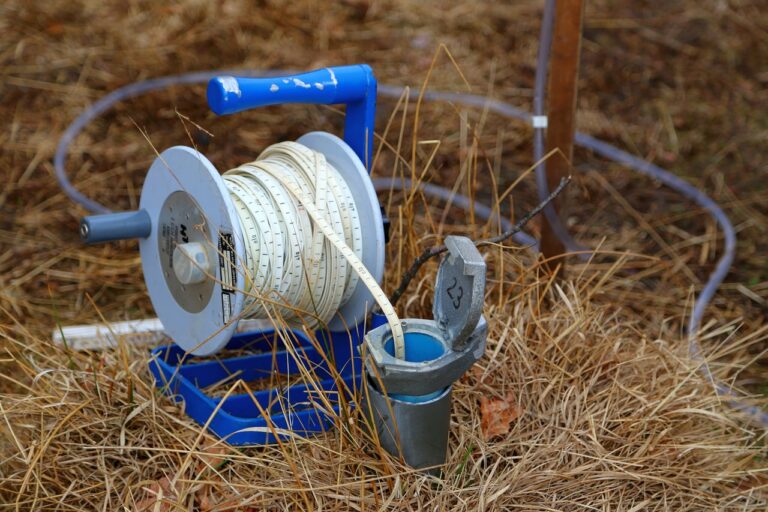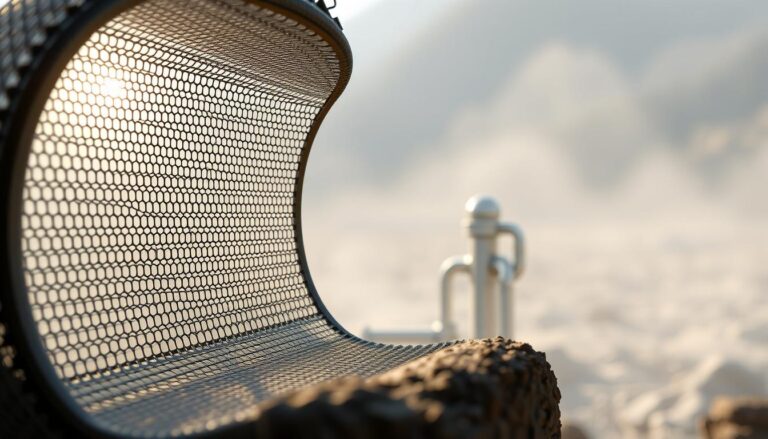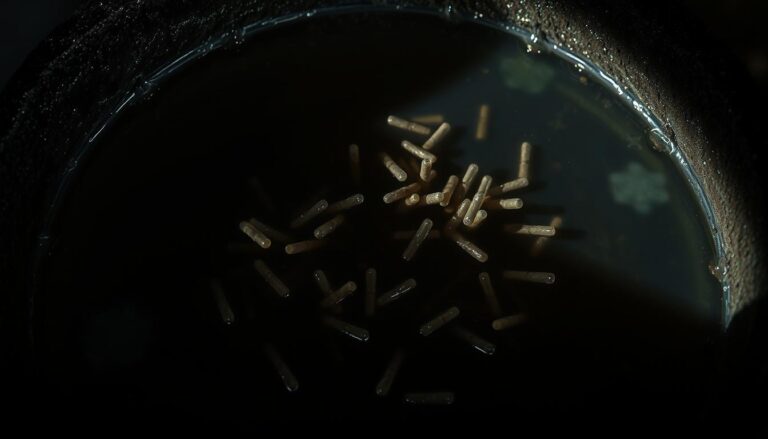What’s the Difference Between a Well Seal and a Well Cap?
Are you unsure whether to use a well seal or a well cap for your water well? Choosing the right component is crucial for the longevity and safety of your well.
Both well seals and well caps are critical in protecting your well from contamination and ensuring the quality of your water supply. However, they serve distinct purposes and are used in different contexts. For instance, well caps are often used in colder climates, whereas well seals are more commonly used in warmer regions.
The decision between a well seal and a well cap depends on several factors, including the depth of your well and the local climate. Understanding the differences between these two components is essential for making an informed decision.
Key Takeaways
- Well caps and well seals serve different purposes in protecting your water well.
- The choice between a well cap and a well seal depends on factors like climate and well depth.
- Well caps are typically used in colder climates to prevent freezing.
- Well seals are more suitable for warmer climates and can support submersible pumps.
- Steel well seals are recommended for wells deeper than 300 feet.
Understanding Well Components: The Basics
When it comes to maintaining a well, understanding its various components is crucial for ensuring the water quality and longevity of the well. The protective elements, in particular, play a significant role in safeguarding the well from potential contaminants and damage.
The Role of Protective Components in Water Wells
Protective components, such as well seals and well caps, are designed to protect the well from external factors that could compromise the water quality. These components are critical in preventing contamination and ensuring the structural integrity of the well.
Why Proper Well Protection Matters for Water Quality
Proper well protection is essential for maintaining water quality. This involves not just the installation of protective components but also their maintenance and inspection over time.
Contamination Prevention
One of the primary functions of well seals and caps is to prevent contamination. By sealing the well casing, they prevent surface water, debris, and contaminants from entering the well. This is crucial in maintaining the quality of the water and ensuring it is safe for consumption.
In addition to preventing contamination, well seals and caps also contribute to the structural integrity of the well. They help to secure the well casing in place, protecting it from damage caused by external factors such as weather conditions or accidental impacts.
Understanding the differences between a well seal and a well cap is vital for choosing the right component for your well. While both serve protective functions, their designs and applications can vary significantly.
What Is a Well Seal?
Understanding the role of a well seal is essential for ensuring the quality and safety of well water. A well seal is a critical component that prevents contamination and ensures the well’s integrity.
Definition and Primary Functions
A well seal is designed to cover the top of a well casing, preventing external elements from entering the well. Its primary function is to protect the well from surface water, debris, and contaminants.
Types of Well Seals Available
There are several types of well seals available, each with its unique characteristics and applications.
Compression Seals
Compression seals are designed to create a tight seal around the well casing, providing a secure and effective barrier against contaminants.
Pitless Adapter Seals
Pitless adapter seals are used in conjunction with pitless adapters, allowing for the safe and secure connection of the well to the distribution system.
Materials Used in Well Seals
Well seals are constructed from a variety of materials, including stainless steel, brass, and rubber. The choice of material depends on the specific application and environmental conditions.
| Material | Characteristics | Applications |
|---|---|---|
| Stainless Steel | Corrosion-resistant, durable | High-risk environments |
| Brass | Corrosion-resistant, strong | Standard well applications |
| Rubber | Flexible, sealing properties | Sealing and gasketing |
As noted by industry experts, “The selection of a well seal material is crucial for ensuring the long-term integrity of the well.” Proper selection and installation are key to the well’s overall performance.
What Is a Well Cap?
Understanding the well cap is essential for maintaining the integrity of a water well system. A well cap is a protective covering that fits over the top of the well casing, providing a crucial layer of defense against external contaminants.
Definition and Primary Functions
The primary function of a well cap is to seal the top of the well, preventing debris, animals, and other contaminants from entering the well. It also helps to prevent water from entering the well from the surface, which can be contaminated with pollutants or sediment.
Types of Well Caps on the Market
There are several types of well caps available, each designed for specific applications. The most common types include:
- Vented caps, which allow for pressure equalization and can help to prevent the buildup of gases within the well.
- Watertight caps, designed to provide a more secure seal and protect the well from surface water intrusion.
Vented Caps
Vented caps are used in situations where the well is subject to significant changes in pressure or where gases may accumulate. They provide a safe release of pressure, helping to prevent damage to the well casing.
Watertight Caps
Watertight caps, on the other hand, are used to provide a more secure seal, protecting the well from surface contaminants and water intrusion. They are often used in wells located in areas prone to flooding or where the water table is high.
Materials Used in Well Caps
Well caps are made from a variety of materials, including stainless steel, plastic, and composite materials. The choice of material depends on the specific requirements of the well, including factors such as corrosion resistance, durability, and cost. For instance, stainless steel well caps are highly resistant to corrosion and can withstand harsh environmental conditions.
When selecting a well cap, it’s essential to consider the well cap specifications and whether to use a well seal or well cap, as the choice between them depends on the specific needs of the well system.
What’s the Difference Between a Well Seal and a Well Cap?
Understanding the distinction between a well seal and a well cap is crucial for maintaining the integrity of your water well system. While both components are used to protect the well, they serve different purposes and offer unique benefits.

Functional Differences
A well seal and a well cap differ significantly in their functions. A well seal is designed to create a tight seal around the well casing, preventing surface water and contaminants from entering the well. On the other hand, a well cap is used to cover the top of the well casing, providing an additional layer of protection. For more information on well seals, you can explore our selection of stainless steel well seals.
Installation Differences
The installation processes for well seals and well caps also vary. Well seals are typically installed during the well construction process, requiring a more complex setup. In contrast, well caps are generally easier to install and can be replaced or maintained with relative simplicity.
Protection Capabilities
Both well seals and well caps offer protection against contaminants, but they do so in different ways.
Waterproofing Abilities
Well seals are designed to be more robust in terms of waterproofing, creating a seal that prevents water from entering the well from the surface. While well caps provide some level of waterproofing, they are not as effective as well seals in this regard.
Contaminant Prevention
In terms of preventing contaminants, both components are crucial. Well seals prevent surface contaminants from entering the well, while well caps stop debris and other contaminants from falling into the well casing.
In conclusion, understanding the differences between well seals and well caps is essential for proper well maintenance and protection. By recognizing their unique functions, installation requirements, and protection capabilities, you can ensure your water well system remains safe and functional.
When to Use a Well Seal vs. a Well Cap
Understanding when to use a well seal versus a well cap is essential for maintaining well integrity. The decision between these two components depends on several factors, including the type of well, environmental conditions, and local regulations.
Well Type Considerations
The type of well is a crucial factor in deciding between a well seal and a well cap. Different wells have different requirements based on their construction and usage.
Drilled Wells
For drilled wells, a well seal is often preferred due to its ability to provide a secure seal against contaminants. Drilled wells are typically deeper and require a more robust sealing solution.
Dug Wells
Dug wells, on the other hand, might use a well cap, especially if they are shallower and have different construction characteristics. The choice depends on the well’s specific needs and local guidelines.
Environmental Factors
Environmental factors, such as flood risk or proximity to potential contamination sources, can influence the choice between a well seal and a well cap. For instance, in flood-prone areas, a more secure seal may be necessary to protect the well.
Local Code Requirements
Local code requirements and regulations also play a significant role in determining whether to use a well seal or a well cap. It’s essential to consult local authorities or well professionals to ensure compliance.
By considering these factors, well owners can make an informed decision about whether to install a well seal or a well cap, ensuring the longevity and safety of their well.
Installation Process Comparison
The distinction between installing a well seal versus a well cap lies not just in their design, but in the steps and expertise required for their installation. Understanding these differences is crucial for ensuring the longevity and effectiveness of your well components.
How to Install a Well Seal
Installing a well seal involves securing it to the well casing, typically using a combination of mechanical fasteners and sealing materials like gaskets or grout. The process requires careful measurement and alignment to ensure a watertight seal. Proper installation is critical to prevent contamination and ensure the well’s structural integrity.
How to Install a Well Cap
Well cap installation is generally simpler, involving the placement of the cap over the well casing and securing it with the appropriate locking mechanism. The simplicity of this process makes it more accessible to DIY installation in some cases. However, ensuring the cap is properly secured is vital to prevent unauthorized access and environmental contamination.
Professional vs. DIY Installation
The decision between professional and DIY installation depends on several factors, including the complexity of the installation and local regulations.
When to Call a Professional
If the installation requires specialized knowledge or equipment, or if you’re unsure about any aspect of the process, it’s best to hire a professional. Incorrect installation can lead to serious issues, including water contamination and structural damage.
DIY-Friendly Scenarios
For simpler installations, such as some well cap replacements, a DIY approach might be feasible if you have the necessary tools and follow the manufacturer’s instructions carefully. Always check local regulations regarding well maintenance and repairs.

Regulatory Standards and Compliance
Understanding the regulatory standards for well seals and well caps is essential for ensuring water quality and safety. These components are critical in protecting water wells from contamination and ensuring the well operates effectively.
National Standards for Well Components
National standards for well components, including well seals and well caps, are often set by organizations such as the American National Standards Institute (ANSI) and the National Sanitation Foundation (NSF). These standards cover aspects such as design, materials, and performance.
| Standard | Description | Applicability |
|---|---|---|
| ANSI/AWWA C500 | Standard for Gate Valves | Well Infrastructure |
| NSF/ANSI 61 | Drinking Water System Components | Well Components |
| AWWA G300 | Standards for Well Management | Well Operations |
State-Specific Requirements
In addition to national standards, state-specific regulations may apply to well seals and well caps. These can include specific requirements for materials, installation practices, and inspection protocols.
Inspection and Certification Processes
Regular inspection and certification of well components are crucial for ensuring compliance with regulatory standards. This involves periodic checks on the condition and performance of well seals and well caps, as well as verification of their compliance with relevant standards.
Compliance with regulatory standards is not just a legal requirement; it’s a critical step in safeguarding water quality and public health.
Maintenance Requirements and Lifespan
Maintaining well seals and caps is essential for protecting water wells from contamination and damage. Regular maintenance not only extends the lifespan of these components but also ensures the overall quality of the water.
Maintaining Well Seals
Well seals are critical in preventing surface contaminants from entering the well. To maintain them effectively, it’s crucial to inspect them regularly for signs of wear or damage. This includes checking for cracks, rust, or any other form of deterioration that could compromise their integrity.
Inspection Tips: Look for any visible signs of damage or corrosion. Ensure that all connections are secure and that the seal is properly fitted.
Maintaining Well Caps
Well caps serve as the final barrier against external contaminants. Maintaining them involves ensuring they are securely locked in place and free from damage. Regularly check the cap for any signs of wear, such as rust or corrosion, and replace it if necessary.
Signs of Damage or Failure
Both well seals and caps can show signs of damage or failure that necessitate immediate attention. These signs include visible corrosion, cracks, or if the component is loose or improperly fitted.
Visual Inspection Tips
When inspecting well seals and caps, look for:
- Corrosion or rust on metal components
- Cracks or breaks in the material
- Signs of tampering or improper fitting
When Replacement Is Necessary
If during inspection you notice any damage or signs of potential failure, it’s crucial to replace the component as soon as possible. Delaying replacement can lead to contamination of the well water, potentially causing health risks and requiring costly remediation.
| Component | Maintenance Task | Frequency |
|---|---|---|
| Well Seal | Inspect for damage or corrosion | Every 6 months |
| Well Cap | Check for secure fit and damage | Every 3 months |
Cost Considerations and Value Analysis
Evaluating the cost considerations and value analysis of well seals versus well caps is essential for making an informed decision that aligns with your budget and protection needs.
Price Ranges for Well Seals
Well seals can vary significantly in price, depending on the material, size, and brand. On average, the cost can range from $50 to $200. High-quality well seals with advanced features such as improved sealing mechanisms or durable materials may cost more, potentially upwards of $300.
Price Ranges for Well Caps
Similarly, well caps have a varied price range, typically between $20 to $100. The cost is influenced by factors such as the material (e.g., steel, plastic, or composite) and the cap’s design features, such as vented or non-vented options.
Long-term Cost Implications
When assessing the long-term cost implications, it’s crucial to consider not just the initial purchase price but also the potential costs associated with maintenance, repair, and replacement. A well seal or cap that is more expensive upfront might offer greater durability and less maintenance, potentially saving money over time.
Investment vs. Protection Value
The value of a well seal or cap is not just in its cost but in the protection it offers against contamination and the potential for costly repairs or health risks. Investing in a higher-quality component can provide significant long-term benefits.
| Component | Average Cost | Long-term Value |
|---|---|---|
| Well Seal | $50-$300 | High protection, potentially lower maintenance costs |
| Well Cap | $20-$100 | Basic protection, variable maintenance costs |
Conclusion
Understanding the differences between a well seal and a well cap is crucial for maintaining the integrity of a water well. Both components play significant roles in protecting the well from contamination and ensuring the quality of the water.
A well seal and a well cap are often used interchangeably, but they have distinct functions. A well seal is designed to provide a secure seal between the well casing and the pump or other equipment, while a well cap is used to cover the top of the well casing, protecting it from external contaminants.
When choosing between a well seal and a well cap, consider the specific needs of your well, including the type of well, environmental factors, and local regulations. Proper installation and maintenance of these components are essential to ensure the longevity of the well and the quality of the water.
In summary, a well seal and well cap summary highlights the importance of selecting the right component for your well’s specific needs, ensuring the protection of the well and the quality of the water it provides.







